Home
A Classless System
“Or as my dad always says, 'It only becomes a social problem when the working man joins in.'” - Ben Aaronovitch, Lies Sleeping
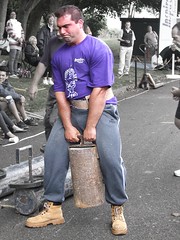
Stupidity
Some people think that stupidity has risen with the internet. However it existed well before that.
Look in virtually any A-Level text book or any fitness book (or look online, e.g. here) and you will see the following diagram using the calf raise as an example of a 2nd class lever and comparing it to a wheelbarrow:
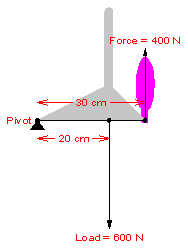
Yet something about it doesn't quite make sense... because if you turn it over so that the person performs a calf press with a weigh equal to his bodyweight of 600 Newtons (e.g. on a vertical leg press machine) it becomes a 1st class lever - so the forces come out different when obviously they shouldn't, i.e. muscle tension is now calculated to be 1200 N which is twice the bodyweight of 600 N:
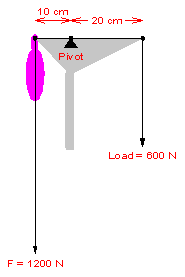
The reason for this discrepancy in calf forces between the 2nd and 1st class levers is that the load on the ankle joint is not bodyweight - the load on the ankle is instead bodyweight + calf muscle tension.
Newton's 3rd Law
It is much better to avoid using the 3 class system of levers and instead bear in mind Newton's 3rd Law:
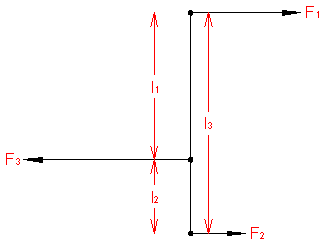
Thus a 3 point lever should obey the following:
F1 + F2 = F3
Opposing MomentsF1l1 = F2l2
F3l1 = F2l3
F3l2 = F1l3
Also of course l1 + l2 = l3.
The terrible 3 class system of levers arbitrarily places where the pivot is and by convention ignores this as an opposing force... so it is best to avoid the 3 class system of levers and instead make sure that all opposing forces balance and all moments balance, i.e. use the classless system in Fig 3.
Here is one way of envisioning the classless system;
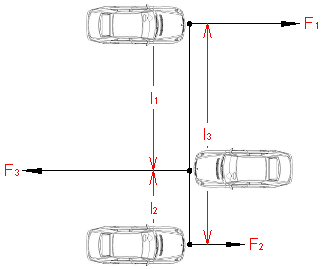
Do not think of the 3 class system or of pivots but use Newton's 3rd Law and thus Fig 3 or 4 above, so the diagram of the calf should look like this:

Conclusion
The only way the calf, in the traditional 3 class system, would operate as a 2nd class lever in wheelbarrow mode is if the calf muscle at it's upper end were attached to an external object. A wheelbarrow is a 2nd class lever because the person lifting the wheelbarrow is external to the wheelbarrow. A calf is 1st class lever because the muscle is attached to its own lifting system, it is not attached to an external system.
The fact is that any 3 point lever can be considered as either a 1st, 2nd or 3rd class lever and hence the 3 class system of levers is useless - all levers are in fact classless; Figs 3, 4 and 5 should always be used.
11th October 2023